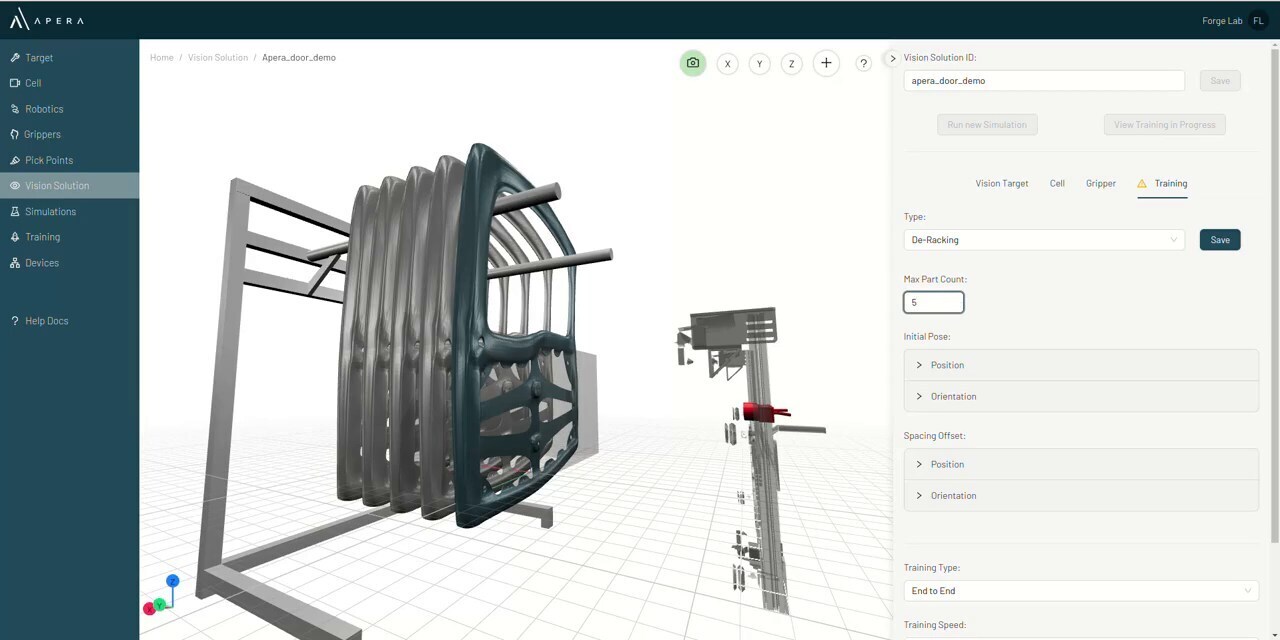Apera AI Enhances Forge with Advanced Robotic Cell Design and Training

Apera AI has announced a significant update to its Apera Forge platform, introducing new features for advanced robotic cell design and de-racking training, announced in a press release. The update aims to streamline vision-guided robotic (VGR) projects by enhancing simulation and training capabilities for industrial automation.
The latest release of Apera Forge includes advanced cell design capabilities, allowing users to fine-tune camera placement, bin positioning, and obstacle configurations to better match real-world environments. This flexibility is intended to improve simulation results and facilitate more accurate cell visualization.
Additionally, the platform now supports EOAT-mounted (Eye-in-Hand) vision setups, simplifying the design process by enabling users to preview and refine camera positioning directly within Forge. This feature is particularly beneficial for systems where cameras are mounted on end-of-arm tooling (EOAT).
Apera Forge also introduces full simulation and AI training for de-racking applications, a common task in the automotive sector. Users can specify de-racking parameters such as initial positions, rack axes, and part spacing, allowing for precise part recognition and picking. The platform's AI models achieve over 99.9% reliability in object recognition and task performance, with complete vision programs ready for deployment within 24 to 48 hours.
We hope you enjoyed this article.
Consider subscribing to one of our newsletters like Robotics Brief or Daily AI Brief.
Also, consider following us on social media:
More from: Robotics
Subscribe to Robotics Brief
Weekly coverage of AI-driven robotics advances in industrial automation, autonomous vehicles, and robotic systems.
Market report
Superagency in the Workplace: Empowering People to Unlock AI’s Full Potential
This report explores the transformative potential of artificial intelligence in the workplace, emphasizing the readiness of employees versus the slower adaptation of leadership. It highlights the significant productivity growth potential AI offers, akin to historical technological shifts, and discusses the barriers to achieving AI maturity within organizations. The report also examines the role of leadership in steering companies towards effective AI integration and the need for strategic investments to harness AI's full capabilities.
Read more
